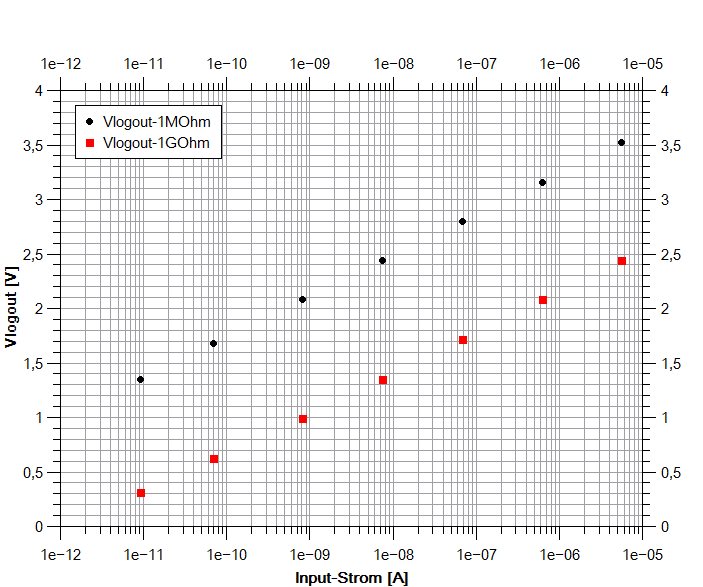Other Parts Discussed in Thread: LOG114, , LOG104
Hi TI employees,
for a student project, i have to measure the resistance of wood over 8 decades as a function of moisture. Because of the high resistances and the logarhytmic behaviour of this material, i decided to use the Log114. I bought the Log114EVM and measured the input current as seen in figure 11 in the datasheet:
I used a 24V voltage source and the resistances had a range of 1MOhm to 1TOhm to simulate the wood resistivity. in addition, i changed R11 from 1MOhm to1GOhm on the EMV to get a higher ratio of I1 to I2.
I plotted the Vlogout and was a little bit surprised because of a non-linearity of the voltage as you can see in the next picture:
Do you have any idea why there is such a harsh notch at about 2.5 nA ? Is it a problem with the Log114 or did i choose the wrong measuring method? I checked my resistances, they seem to be correct.
I also simulated the EMV and there is no such problem.
Hope you guys can help me. If you need additional information, please let me know.
Kind regards
Felix



